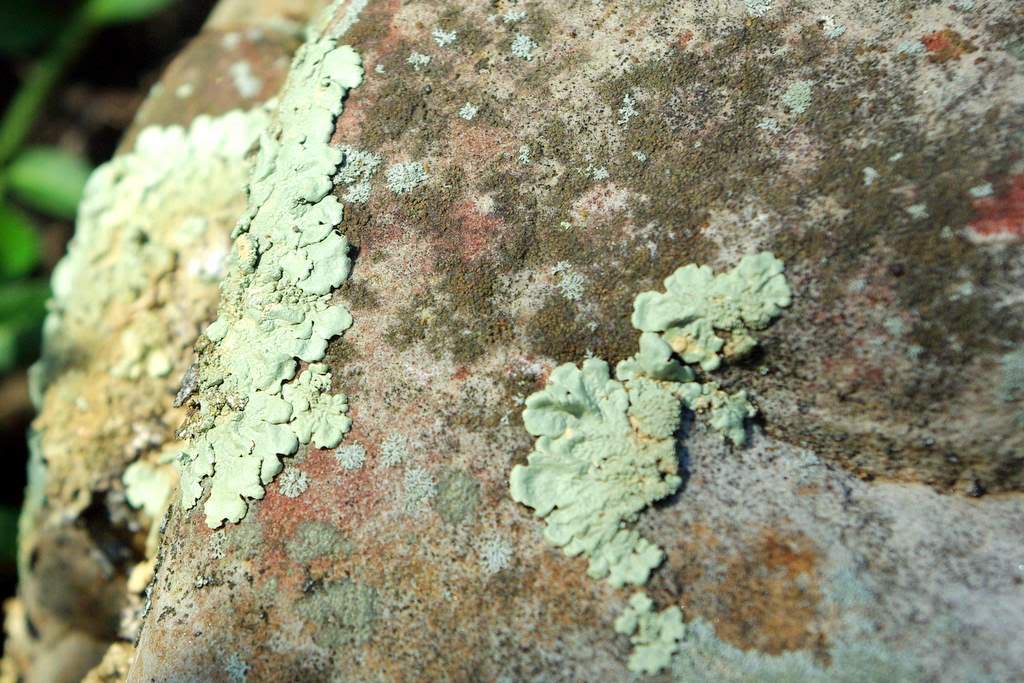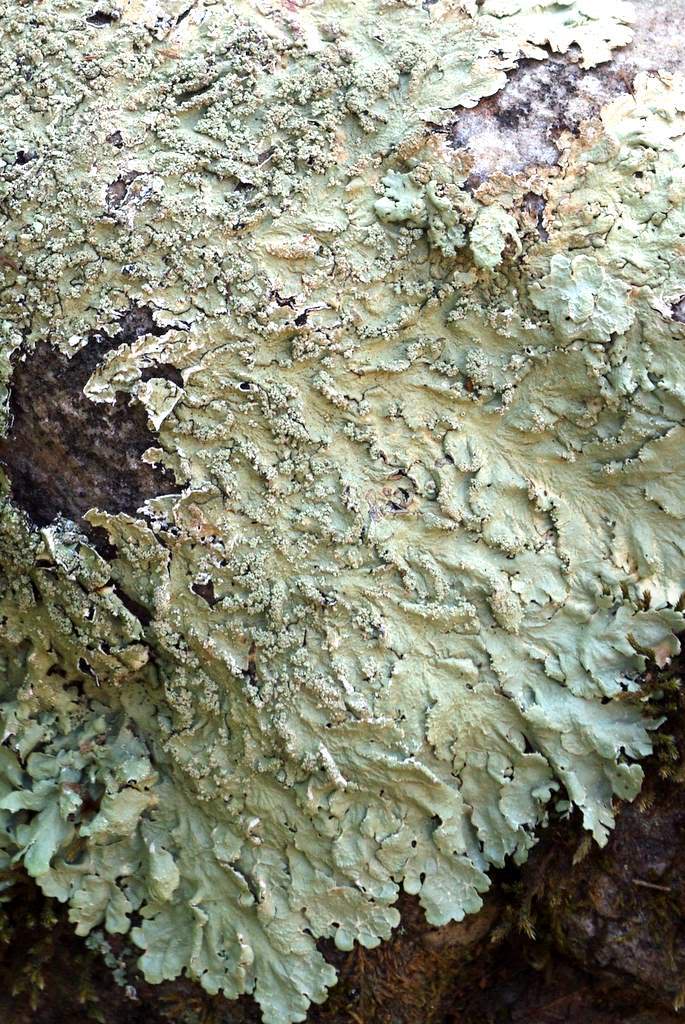But there's another type of "plant" that I'm fascinated by way at the other end of the scale. Tiny, ubiquitous organisms that typically go unnoticed, but have a lot to offer to those who care to look. I'm talking about lichens.
Although not strictly plants, lichens are a symbiotic organism consisting of a fungus and an algae (typically -- if you want more technical details, look here).
The algae produces the food through photosynthesis, while the fungus provides the structure to anchor the lichen, store water, and to provide a larger surface area for photosynthesis and nutrient absorption. (Nutrients are absorbed through rain and dust.)
Lichen doesn't need soil, so most lichens live where more complex plants cannot: on rocks, trees, and other inhospitable places where there is no competition for water, nutrients, or light.
Some lichens actually break down the rocks that they grow on, helping to create soil where once there was none.
For this reason it's been proposed that lichens should be the first organisms introduced in the terraforming of another planet such as Mars. Over time the lichens will create a thin layer of soil that can be used by slightly more complex plants, which will in turn contribute even more organic matter to the soils when they die, allowing even larger plants to grow, and so on. This isn't a terraforming blog (is there even such a thing?) so that's where I'll stop. Much more here.
Lichens take several different forms. Some species are "foliose" or leaf-like:
Others are "crustose", forming a "crust" on the rock or tree. Still others are "fruticose" (shrubby) or gelatinous. I don't think I've ever seen any fruticose or gelatinous lichen, but I may have without knowing they were lichen.
Lichens are tough. Apparently they don't even need air to survive, as a recent experiment by the European Space Agency exposed lichens to the vacuum of space for 15 days in May, 2005. The lichens survived apparently unharmed and unchanged. (Another reason they're suggested for terraforming.)
Most lichens around here are the grey or slightly greenish variety:
There are other more colorful kinds of lichen too, such as these found on a mountain in Wyoming:
Lichens are slow-growing, and quite long-lived. I wonder how long it's taken this one to get this large with its "old peeling paint" look?
I started paying attention to lichens several years ago because I thought they were really beautiful, especially when they combine on certain tree barks. I still find them to be beautiful, but I'll continue paying attention to them because they are fascinating organisms.
They don't really have the "wow" factor of bamboo though, do they?











What a fascinating post! I've been paying more attention to mosses and lichens lately and realized just how little I knew about them.
ReplyDeleteSwell! So how do I kill it without harming the tree?
ReplyDeleteWhy do you want to kill it? It's part of the ecosystem and is not harming the tree AFAIK.
ReplyDelete